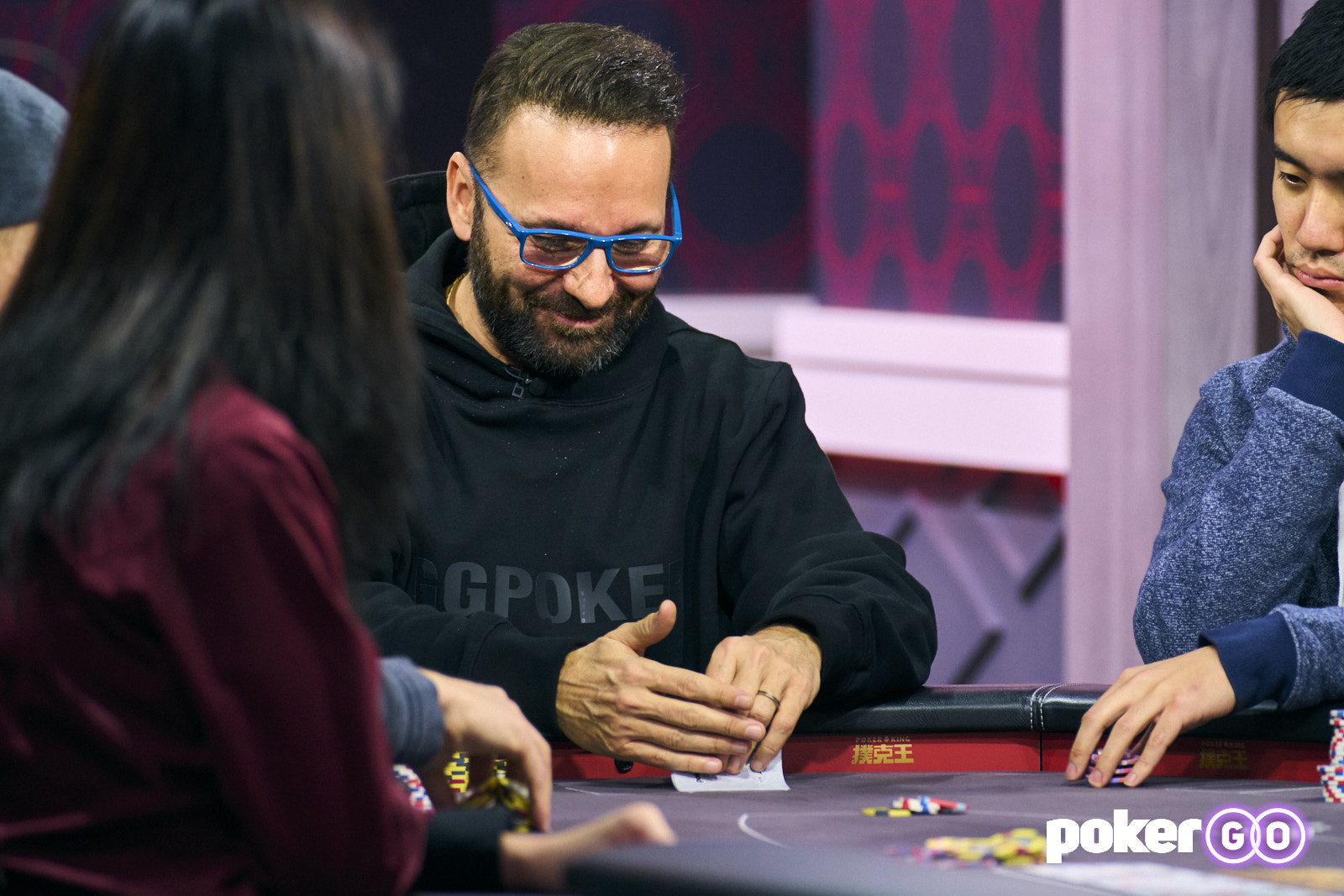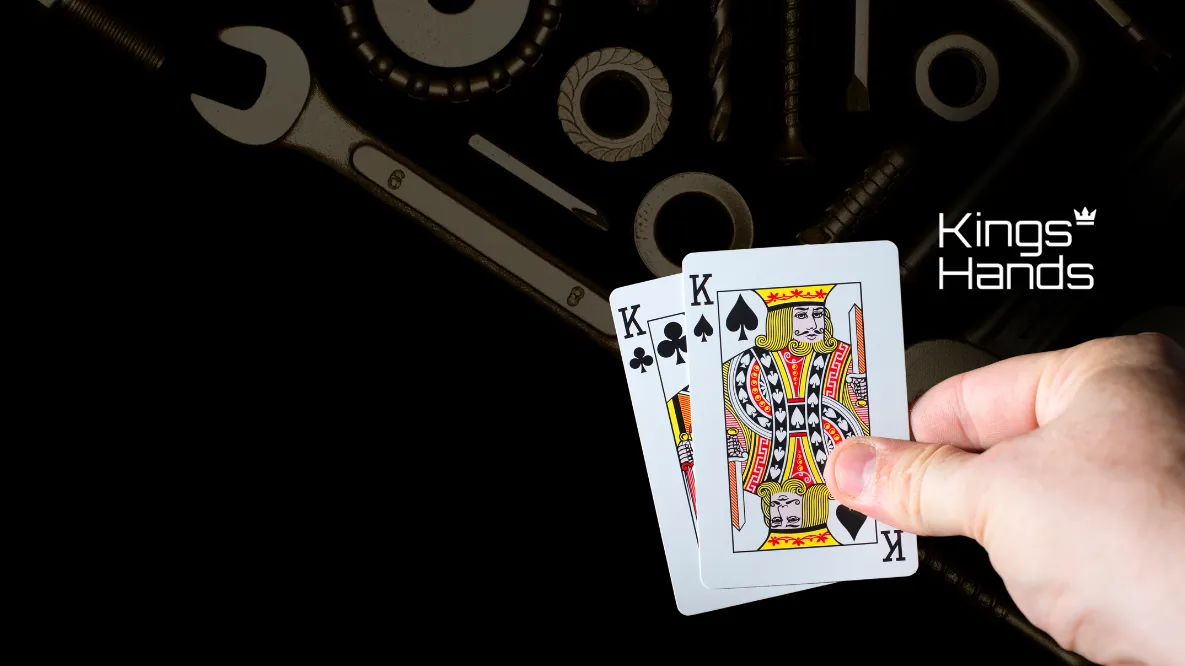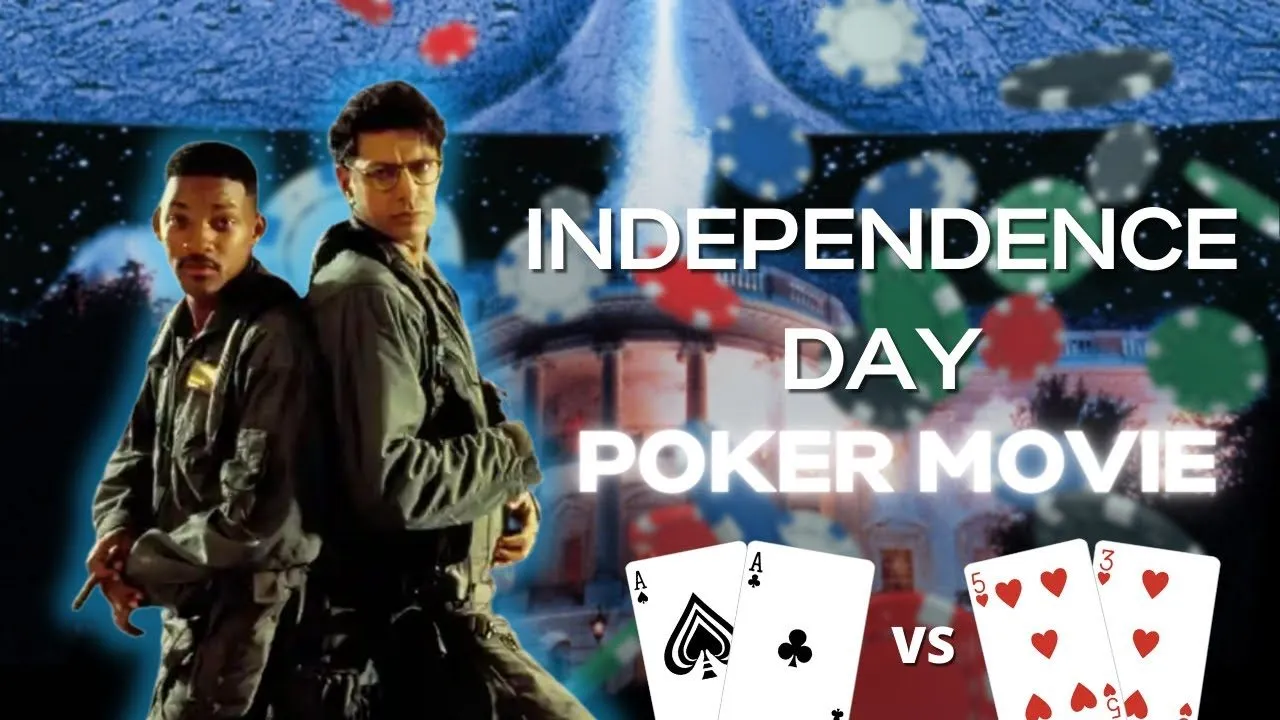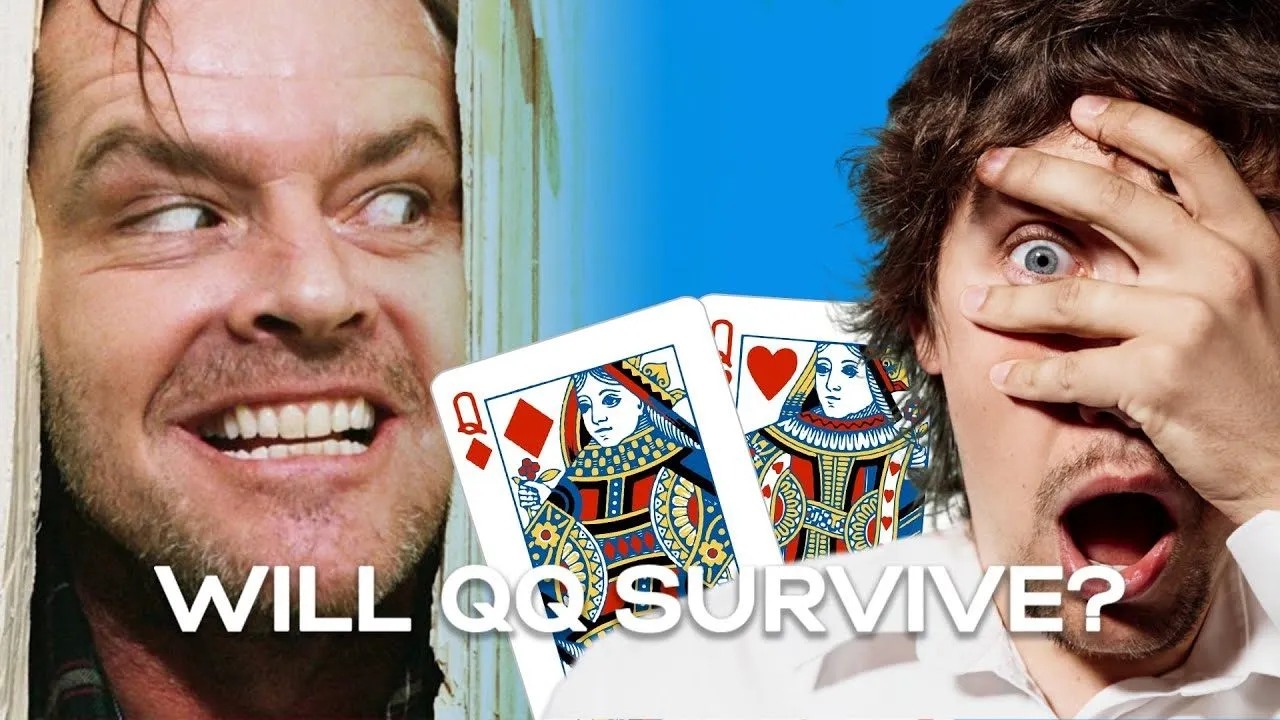I know what you’re thinking: “You can’t see someone’s brain; how can you pick up poker tells from that?” And you’re right; you can’t see someone’s brain, but what you can do is understand the psychology of your opponents. Once you know why your opponent is acting in a certain way, it becomes much easier to exploit them.
In part one of our series on poker tells, we’re starting right at the top, the control centre of everything you do – the brain. We’ll be looking at the most common psychological poker tells players give away at the table and how you can exploit them.
Strong When Weak, Weak When Strong
One of the most common psychological tells you’ll come across in poker is a pretty straightforward one:
When a player is acting strong, they’re weak, and when they act weak, they’re strong.
It’s basic reverse psychology, designed to trick you into making the wrong move. While it may be simple, it’s surprisingly effective.
Humans are social creatures, and one of our great strengths is the ability to pick up on nonverbal cues to interpret how someone is feeling. If you look at someone who doesn’t look confident, your instinct is to take that at face value, so you assume they have a weak hand. If you don’t question your instincts, you’ll end up making the wrong decision.
But how do you know when someone is being genuine or not? After all, I’ve just explained that your instinct will be to trust everyone at face value, so how do you identify the people who are being deceptive? While there may be some people at the table who look dodgy enough that your instinct isn’t to trust them, that’s not going to be the case for everyone.
The best way to identify the people who are being deceitful is to watch them while they’re playing and look at the results at showdown. How does their body language match the hands they’re showing down? Do they align or not? Only through carefully studying your opponent can you truly identify the players with this psychological tell.
Be Wary Of False Tells
If you’re up against other thinking players at the table, there’s a chance that they’ll give off false tells to try and “level” you into making the wrong decision. The “strong is weak, weak is strong” tell is one of the most common ones for people to fake – mainly because it’s the easiest to do!
This is why you need to pay close attention to the hands your opponents are showing down. It’s easy to look at a player making a big show of aggression and think, “Wow, look at that; he’s trying so hard to look strong; he must be weak!” whereas in reality, they’re trying to trick you into calling.
While there’s no foolproof way of determining when someone is faking a tell or not, the best chance you have is to think about the kind of player they are. The better a player is, the more likely they will fake a tell. This is because good players will do their best to eliminate actual tells from their game but recognise that other players will look for them, so they deliberately mislead you with false tells.
How Do I Counter It?
Once you’ve found one of these players at the table, you need to act on it! There’s no point in identifying tells if you’re not going to adjust your game once you’ve found one. Luckily, this one is very easy to counter, but just in case you’re new to this, I’ll spell it out for you.
- If they’re acting weak, it means they’re strong, so when they act weak, only continue with your strongest hands.
- If they’re acting strong, it means they’re weak, so when they act strong, call down lighter or play back at them more aggressively.
It’s as simple as that! As long as you have a solid read that your opponent is giving off this tell, you’ll be able to exploit it by doing the opposite of what they want you to do.
Acting Fast
Another common tell at the poker table is acting fast. Just to be clear, by acting fast, I don’t mean that they take 10 seconds to make a decision; I’m talking snap decisions – often less than a second or two. Many players struggle to understand what it means when a player acts fast, so let’s break it down.
So what does it mean when a player is acting fast? Well, if they’re able to make their decision almost instantly, it tells us that they don’t have to think about it. If they can act in a split second, their decision must be so obvious that they don’t have to consider it at all.
Sometimes in poker, you have really obvious decisions. For example, if you have the nuts on the river with a pot-sized bet left behind, you know you’re going to go all in – you don’t have to think about it. Almost all of the time, these obvious decisions are when we have our strongest hands. Some players will make these decisions instantly; why bother waiting around, right? But most players will at least pause for a few seconds to make it look like they have a decision before making the obvious play.
So, if someone is acting instantly, they either have an obvious decision, or they’re trying to make it look like they have an obvious decision and, by extension, a very strong hand. Just like before, the best way to figure out which is more likely is by studying how your opponents play and viewing their hands at showdown. If your opponent always takes a few seconds before betting with strong hands, and suddenly they’re snap-jamming over your bet, it’s likely that they’re trying to make themselves look strong.
Another way you can figure out how strong they are is by looking at the board texture. Often, the dryer the board texture, the easier your decisions are, as there are fewer straight and flush draws to worry about. Conversely, if a board is sopping wet with straight and flush draws all over the place, you often have to take more time to figure out how you want to play it, even with your strong hands. Therefore, someone acting instantly on a wet board is more than likely making a show of strength, as if they had a value hand, they’d want to consider their options on such a draw-heavy board.
How Do I Counter It?
If you think you’ve identified an opponent with this tell, how do you adjust to it? Well, we’ve discussed that someone acting instantly in an unlikely situation means they’re more likely to be bluffing. That means the best way to adjust to this tell is to call them down wider.
Exactly how wide you call them down will depend on your level of confidence in the tell. If you only have a suspicion that your opponent has this tell, only widen your calling range by a couple of percentage points until you get a solid idea of how they’re playing. One of the ways tells become unprofitable is by over-adjusting to them once you think you’ve found one – keep it conservative until you have a rock-solid read.
Acting Slow
On the other side of the coin, we have players who act excessively slowly when making a decision. We know there are some players who seem to take an age over every decision, but those aren’t the ones we’re focusing on here. We’re talking about the players who play normally but suddenly decide to spend a long time on one decision. While you may think that it’s just the opposite of acting fast, and therefore we just make the opposite adjustment, it’s a little more nuanced than that.
Again, let’s start by looking at what it means if someone is taking a long time to make a decision. If they take a long time to act, the implication is that they have a very tough decision that needs to be thought through. More often than not, this means that a player either has a thin value hand or a bluff. However, as we mentioned earlier, a player may be deliberately taking a long time to give the illusion of a difficult decision where none exists. How do you determine the difference between a legitimate tank and a fake one?
The key difference is the amount of time someone takes. If they’re actually thinking through a decision, they’ll take a lot longer to do so, as they’re not even noticing how long they’re taking. If you’ve ever tried to “fake tank” when you know exactly what you’re going to do, thirty seconds feels like an hour. You can’t wait to make the action you want, so it’s hard to wait the same amount of time you do when making a legitimate decision.
While there’s no specific amount of time that has to occur for someone to be legitimately thinking, a good rule of thumb is the longer someone takes to decide, the more likely it is that their hand is weak.
How Do I Counter It?
As this tell is a little harder to identify, it’s best not to go overboard when making your adjustments. If you think someone is likely to be weak based on the time it takes them to make their decision, you can adjust by calling wider or playing back at them more aggressively.
However, I’d only recommend making slight adjustments until you’re confident in your read.
Attentiveness At The Table
Being consistently attentive at the table is very hard to do when playing live poker. The pace of the game is slow, you have to fold most of your hands, and it’s far too easy to get distracted by the goings on in the casino around you. This is something that affects every player at the table, and it’s something you can exploit if you look closely enough.
Preflop
You’ll notice a marked difference in the posture and attentiveness of players at the table when they pick up a good hand they want to play. They’ll transform from slouching blobs at the table to perfectly postured players, and you’ll see their eyes light up as they realise they finally have a good hand to play. You can often see them shuffling around in their seat, itching for it to be their turn to act.
All of this adds up to a strong hand they can’t wait to play. If you see someone acting like this at the table, know that it’s very likely they have a great starting hand.
Postflop
Once the hand is in full flow, there are still ways you can use the attentiveness of a player to your advantage.
One of the major things to look for is your opponent’s reaction to the flop, turn, or river. Most players can’t help but watch the flop as it comes out, eager to see whether or not they’ve made their hand. Instead of following along, you should watch your opponents as the flop is being dealt and look for the small reactions they make.
Most recreational players can’t help but crack a little smile when they’ve made their hand or shake their head slightly if they’ve missed the board completely. These tells are a lot harder to fake, as many players don’t even know they’re being watched when it happens. Better players are more experienced at hiding these tells, but many players will give something away if you watch closely enough.
Another action to look out for during a hand is if a player looks completely disinterested in what’s going on at the table. They’re watching people play roulette or watching the TV – basically doing anything but looking at what’s happening on the felt. While this may seem like someone a tell of weakness, it all depends on their posture.
Someone who is slouching in their seat and isn’t interested in what’s going on likely has a weak hand. They’re not in a position where they’re ready to make an action other than fold when it comes around to them. However, if someone is sitting upright in their seat, they’re showing that they are interested. Remember our preflop tell? Players will give away their general interest through their body language. If someone is trying to look disinterested in the hand but has positive body language, they likely have a strong hand.
How Do I Counter It?
As there are a couple of parts to this section, we’ll break them down individually.
- Preflop – If your opponent suddenly takes a keen interest in the game after being distracted, they likely have a strong hand. Counter this by playing tighter and only playing with the strongest hands in your range.
- Postflop Positive – If your opponent reacts positively to the flop, turn, or river being dealt, the card has likely improved their hand. Counter this by playing tighter against their bets and by not falling into their trap if they check.
- Postflop Negative – If your opponent reacts negatively to the flop, turn, or river being dealt, the card has likely not helped their hand. Exploit this by being more aggressive with your bluffs and by trapping with your strong hands.
- Postflop Disinterest – If your opponent looks disinterested in the hand, they’re likely trying to feign a weak hand. Counter this by playing tighter against their bets and by playing passively when they check.

Summary
Understanding the meaning behind certain actions at the table is vitally important to interpreting poker tells. While we’ve covered the tells most affected by psychology in this article, each tell in the series is going to be somewhat affected by the concepts we’ve covered today. Emotions play a key role in how we act at the table, and they’re not always able to be controlled. Knowing that the actions of your opponents are affected by these emotions makes them easier to understand and, therefore, easier to exploit at the tables.
Join us in Part Two of this Poker Tells series, where we’ll be looking at the window of the soul – the eyes. Make sure you join our PokerDeals Facebook group or follow us on Instagram to be notified of the next article in the series.





















